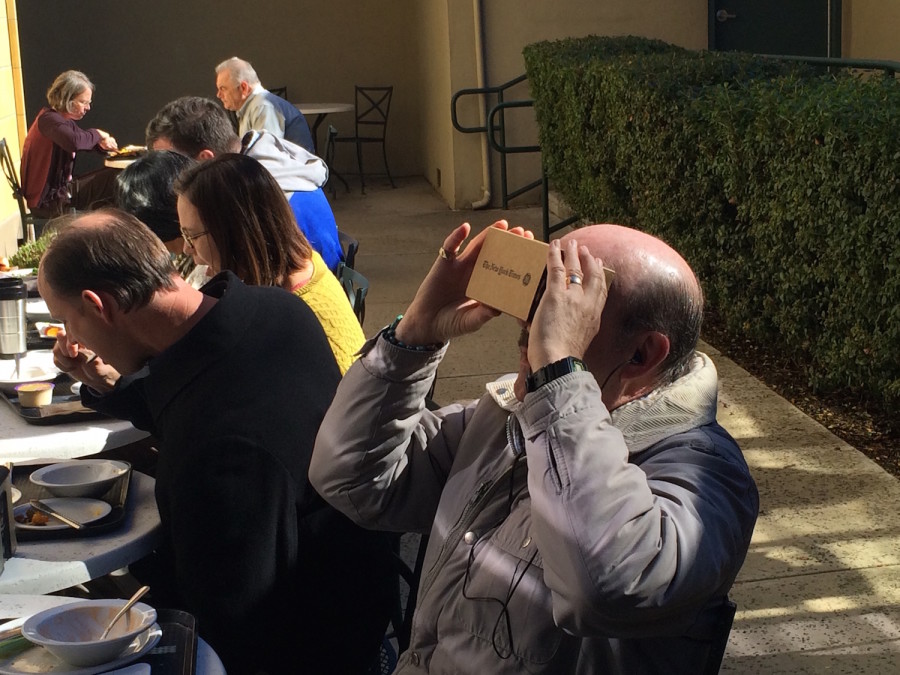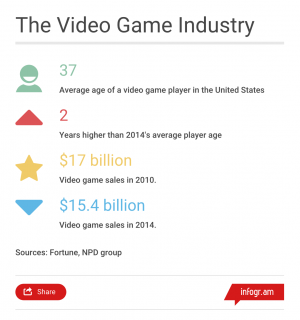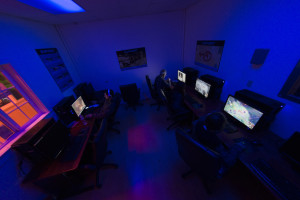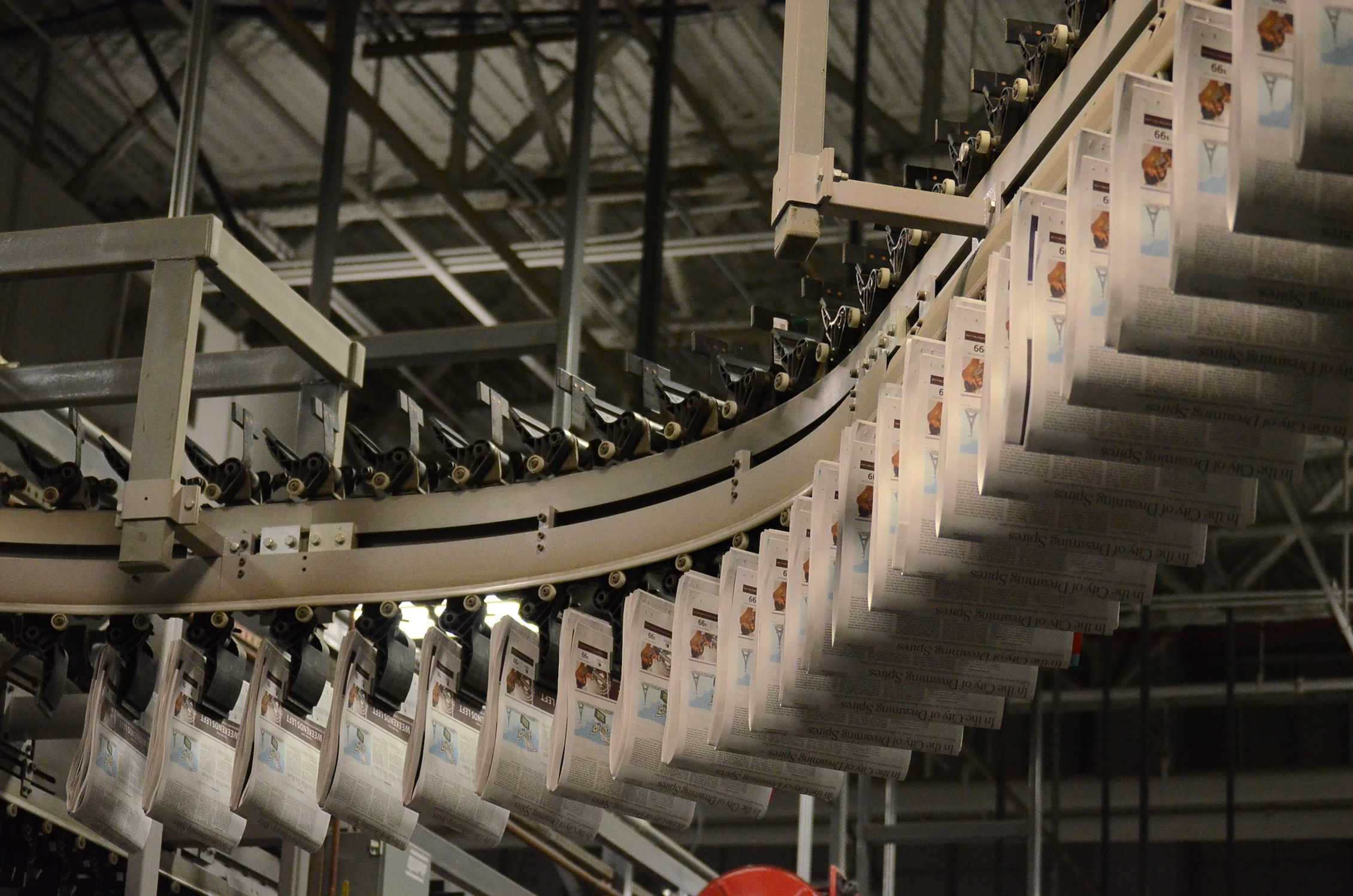Google goes 3D with Cardboard
Virtual reality technology changes the game
Substitute teacher John Heyes uses the Google Cardboard sent by The New York Times to its subscribers. Google is one of multiple companies now exploring the virtual reality industry.
November 28, 2015
As Maile Chung (11) dons the cardboard box-shaped headset, she is immediately transported from the cool benches inside the Dobbins hallway to a sunny canoe piloted by a South Sudanese child in a swamp.
As she continues watching, the scene shifts, showing the tales of three children, displaced from their homes due to war.
Early last month, The New York Times sent copies of Google Cardboard, a virtual reality platform that requires only a smartphone, to each of their subscribers and released a short documentary called “The Displaced” about three refugee children displaced from their former homes.
“It’s a very different [experience]. You kind of see everything up close, and it gives you a firsthand view of what it would be like to be there,” Maile said.
Virtual reality technology is slowly making its way into a variety of venues, including film, video gaming and visual journalism.
This Wednesday, students also experienced virtual reality firsthand when the Arrive Alive Tour visited the campus. Demoing two simulations of texting while driving and driving under the influence, the tour used virtual reality goggles to caution students about the dangers of impaired driving.
Google first released Cardboard in a 2014 developer conference. To see reactions of students and teachers using Cardboard for the first time, visit harkeraquila.com.
This piece was originally published in the pages of The Winged Post on November 20, 2015.


















![“[Building nerf blasters] became this outlet of creativity for me that hasn't been matched by anything else. The process [of] making a build complete to your desire is such a painstakingly difficult process, but I've had to learn from [the skills needed from] soldering to proper painting. There's so many different options for everything, if you think about it, it exists. The best part is [that] if it doesn't exist, you can build it yourself," Ishaan Parate said.](https://harkeraquila.com/wp-content/uploads/2022/08/DSC_8149-900x604.jpg)




![“When I came into high school, I was ready to be a follower. But DECA was a game changer for me. It helped me overcome my fear of public speaking, and it's played such a major role in who I've become today. To be able to successfully lead a chapter of 150 students, an officer team and be one of the upperclassmen I once really admired is something I'm [really] proud of,” Anvitha Tummala ('21) said.](https://harkeraquila.com/wp-content/uploads/2021/07/Screen-Shot-2021-07-25-at-9.50.05-AM-900x594.png)







![“I think getting up in the morning and having a sense of purpose [is exciting]. I think without a certain amount of drive, life is kind of obsolete and mundane, and I think having that every single day is what makes each day unique and kind of makes life exciting,” Neymika Jain (12) said.](https://harkeraquila.com/wp-content/uploads/2017/06/Screen-Shot-2017-06-03-at-4.54.16-PM.png)








![“My slogan is ‘slow feet, don’t eat, and I’m hungry.’ You need to run fast to get where you are–you aren't going to get those championships if you aren't fast,” Angel Cervantes (12) said. “I want to do well in school on my tests and in track and win championships for my team. I live by that, [and] I can do that anywhere: in the classroom or on the field.”](https://harkeraquila.com/wp-content/uploads/2018/06/DSC5146-900x601.jpg)
![“[Volleyball has] taught me how to fall correctly, and another thing it taught is that you don’t have to be the best at something to be good at it. If you just hit the ball in a smart way, then it still scores points and you’re good at it. You could be a background player and still make a much bigger impact on the team than you would think,” Anya Gert (’20) said.](https://harkeraquila.com/wp-content/uploads/2020/06/AnnaGert_JinTuan_HoHPhotoEdited-600x900.jpeg)

![“I'm not nearly there yet, but [my confidence has] definitely been getting better since I was pretty shy and timid coming into Harker my freshman year. I know that there's a lot of people that are really confident in what they do, and I really admire them. Everyone's so driven and that has really pushed me to kind of try to find my own place in high school and be more confident,” Alyssa Huang (’20) said.](https://harkeraquila.com/wp-content/uploads/2020/06/AlyssaHuang_EmilyChen_HoHPhoto-900x749.jpeg)
















